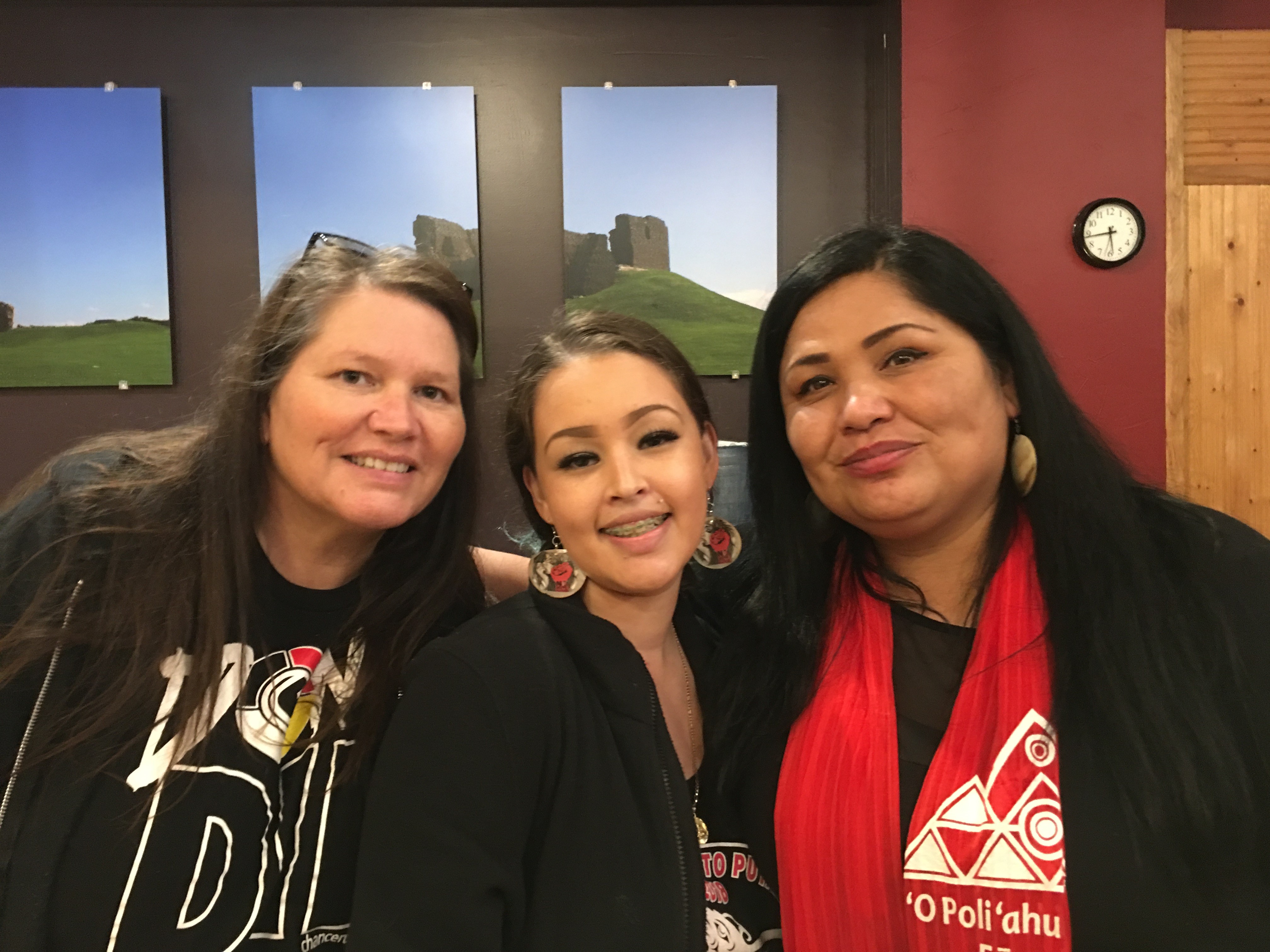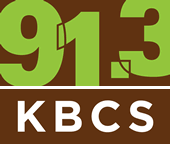Missing and Murdered Indigenous Women – A Series of Six Stories
March 11, 2022 - 3:53 am

A report released by the Urban Indian Health Institute in 2018 shows that over 500 cases of missing or murdered indigenous women have been found throughout the United States – many since the year 2000. 70 women had gone missing or were murdered in Seattle and Tacoma. 6 were reported in Portland. How are indigenous families impacted by this and how are our communities coming together to help? Listen to this series, produced by Yuko Kodama, Jesse Callahan, Adria McGhee and Jim Cantu. Special thanks to LPFM station KVRU
Photo by Yuko Kodama
Episode 1 Roxanne White
0:00
91.3 KBCS music and ideas listener supported radio from Bellevue College. Why do cases of missing and murdered indigenous women continue to go unsolved? Roxanne White is from Yakama, Nez Perce, Nooksack, and Gros Ventre tribal lines. White is also an activist advocating for the families of missing and murdered indigenous women. KBCS’s Yuko Kodama caught White at a public event for this cause. White starts by describing how the missing and murdered indigenous women movement began.
0:12
Our first nations’ sisters started leading this movement decades ago, the term missing and murdered indigenous women and girls started over there with the first nations’ sisters Highway of Tears. And they are continuing to fight systemic racism and speak for our loved ones. And when I say ours, it’s because we don’t have borders, that’s a colonized concept. We can acknowledge one another and we’re calling awareness, we’re demanding for justice.
1:04
When one of our girls goes missing, first, you know, she goes missing from her family and her loved ones in her community. But she also goes missing to the fact that the police departments different jurisdictions say, “well, that’s not my problem. Oh, she’s an adult, she probably went off with her friends for the weekend”. Or they pull up records and they’ll dehumanize [her] by saying, “well she was an alcoholic”, or, you know, “she’s a drug addict”, or several descriptions that are very dehumanizing: prostitute. Never the name of the person that has gone missing or has been found murdered.
1:45
And part of those issues that we’re continuously seeing is coroners. When a body is found, one of our loved ones, the coroner has the responsibility and he has the authority to deem that person homicide. Or whatever he sees, right? That’s his position. But what these coroners are doing is saying that our loved ones killed themselves or they fell. Accidental deaths or “cause unknown” when they have bruises all over their bodies. They’re not doing the correct tests. But what they say is that, “Oh, she must have shot herself” and not even investigating that.
2:24
We’ll never be able to stop people from harming other people. But what we need to do is send a message to the world that that you can’t just kill a Native American and get away with it. Because right now, that’s what this government – that’s the message they send people. They send to people that there’s no justice for us, that you can do that and get away with it. And so, that needs to change. We want support from all the police departments and the FBI. From the court, to the prosecutors to the coroners. We need allies, we need non-natives, we need whoever wants to join and speak with us against that injustice.
3:12
Roxanne White lost an aunt violence in 1999. White also lost her niece last year. A vigil will be held for murdered indigenous woman Eveona Cortez this Thursday from 6:45 to 8pm at 1101 Southwest 139th Street in Burien.
Red Skirt Sewing Circle
0:00
91.3 KBCS music and ideas listener supported radio from Bellevue College.
0:07
Indigenous women have taken the lead in increasing awareness of the high numbers of their sisters who go missing and die to violence. Roxanne White from the earlier story organized a community building event with the focus of supporting indigenous women. KBCS’s Yuko Kodama went to the gathering and brought back this story.
0:26
I walked into a small church in Renton, there’s a large spread of food and drinks in the corner, a potluck. A handful of kids chase each other in the hallway and under tables. The table tops are covered with sewing machines and brightly colored material. On the walls are posters with photos of women. There’s bold lettering saying “missing”, then the woman’s name, and the date and place of their last sighting. The event is a red skirt sewing circle. It’s a community building event for women to come together to sew ribbon skirts. This sewing circle was themed for missing and murdered Indigenous women and girls. A group of about 11 women and youth work away at measuring, cutting and sewing fabric to make the skirts – an a-line long skirt decorated with brightly colored ribbons and patterns. This ribbon skirt or prayer skirt is ceremonial regalia of the plains tribes. Noel Parrish is from the plains area. She’s from the Crane Clan of the Turtle Mountain Band of Chippewa Indians. Parrish describes what the prayer skirt represents.
1:39
We wear our skirt because we, as women, as life givers, are sacred. Our colors connects us to the Mother Earth and who we are as women, as life givers. And so we choose our colors so that creator knows who we are.
1:53
I’m no expert. I’m a Yakama woman, but the way I feel about it is is that when I put this skirt on, it’s sacred. And it’s a covering. It’s a protection. It’s who I am as a woman is an indigenous woman, a native woman.
2:12
That was Roxanne White from the Yakama, Nez Perce, Nooksack, and Gros Ventre tribes. White is a leader in the missing and murdered Indigenous women movement. She’s also the organizer of the sewing circle. The ribbons, skirts are plains tribes regalia. Indigenous women from other tribes began wearing them in solidarity with the tribes at Standing Rock. The skirts have taken on an additional life, as a symbol of prayer and solidarity among women, which is relevant at this event: the red skirt sewing circle.
2:45
Women’s skirts is becoming a thing where women, from all tribes, from all nations, are excited to make their own ribbon skirt. We decided to have this event open because of the importance of solidarity and how we all work together as one people. This is good medicine. It’s for each one of these women and their children and their families. Even the little kids, even the little girls went and picked out their material and whatever they saw themselves wearing. And then they’ll learn and when they wear it, they’re going to feel proud because they’re wearing culture. And that’s what it’s all about.
3:30
So the women at the red skirt sewing circle are building a nurturing support network for each other amidst the growing number of missing and murdered indigenous women and girls. For KBCS. This is Yuko Kodama.
3:46
The red skirt sewing circle was held in December of 2018.
Carolyn DeFord
0:00
91.3 KBCS music and ideas listener supported radio from Bellevue College.
0:07
Indigenous women have taken the lead in increasing awareness of the high numbers of their sisters who go missing and die to violence. Roxanne White from the earlier story organized a community building event with the focus of supporting indigenous women. KBCS’s Yuko Kodama went to the gathering and brought back this story.
0:26
I walked into a small church in Renton, there’s a large spread of food and drinks in the corner, a potluck. A handful of kids chase each other in the hallway and under tables. The table tops are covered with sewing machines and brightly colored material. On the walls are posters with photos of women. There’s bold lettering saying “missing”, then the woman’s name, and the date and place of their last sighting. The event is a red skirt sewing circle. It’s a community building event for women to come together to sew ribbon skirts. This sewing circle was themed for missing and murdered Indigenous women and girls. A group of about 11 women and youth work away at measuring, cutting and sewing fabric to make the skirts – an a-line long skirt decorated with brightly colored ribbons and patterns. This ribbon skirt or prayer skirt is ceremonial regalia of the plains tribes. Noel Parrish is from the plains area. She’s from the Crane Clan of the Turtle Mountain Band of Chippewa Indians. Parrish describes what the prayer skirt represents.
1:39
We wear our skirt because we, as women, as life givers, are sacred. Our colors connects us to the Mother Earth and who we are as women, as life givers. And so we choose our colors so that creator knows who we are.
1:53
I’m no expert. I’m a Yakama woman, but the way I feel about it is is that when I put this skirt on, it’s sacred. And it’s a covering. It’s a protection. It’s who I am as a woman is an indigenous woman, a native woman.
2:12
That was Roxanne White from the Yakama, Nez Perce, Nooksack, and Gros Ventre tribes. White is a leader in the missing and murdered Indigenous women movement. She’s also the organizer of the sewing circle. The ribbons, skirts are plains tribes regalia. Indigenous women from other tribes began wearing them in solidarity with the tribes at Standing Rock. The skirts have taken on an additional life, as a symbol of prayer and solidarity among women, which is relevant at this event: the red skirt sewing circle.
2:45
Women’s skirts is becoming a thing where women, from all tribes, from all nations, are excited to make their own ribbon skirt. We decided to have this event open because of the importance of solidarity and how we all work together as one people. This is good medicine. It’s for each one of these women and their children and their families. Even the little kids, even the little girls went and picked out their material and whatever they saw themselves wearing. And then they’ll learn and when they wear it, they’re going to feel proud because they’re wearing culture. And that’s what it’s all about.
3:30
So the women at the red skirt sewing circle are building a nurturing support network for each other amidst the growing number of missing and murdered indigenous women and girls. For KBCS. This is Yuko Kodama.
3:46
The red skirt sewing circle was held in December of 2018.

